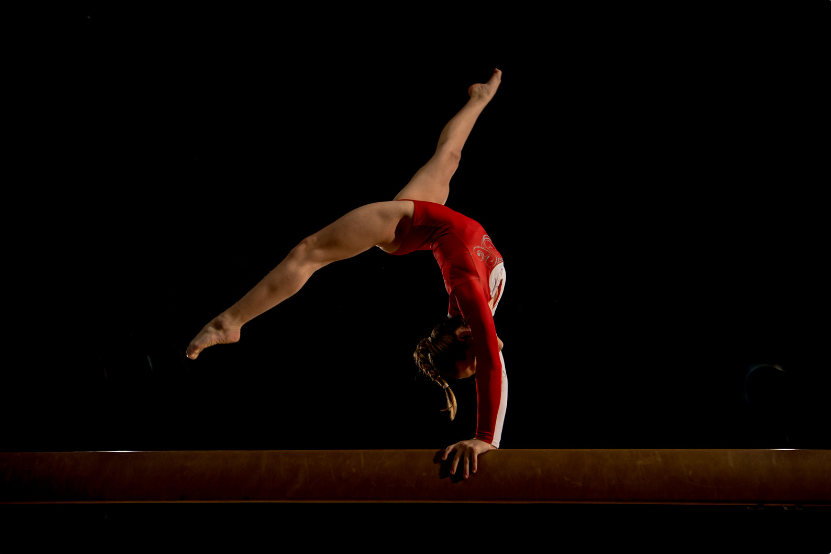An Overview of Lost Move Syndrome
As autumn comes around, many of us know that both high school and collegiate sports seasons have started up again, and competitions have become more intense with frequent, high-stakes games. Performing for an audience is an incredibly nerve-racking experience for anyone, but especially for athletes who have teams, schools, organizations, fans, and others relying on them to perform well.
Athletes are all trying to compete at their peak to earn playing time, win big games, impress scouts, or help advance their team through tournaments – that puts a lot of pressure on athletes to show up and perform.
Seasoned athletes might seem to be immune to the pressure in a way that seems inhuman, but we all know that’s not true; we’ve seen several examples of professionals making a bad shot, missing a goal, and not being able to compete to their normal caliber, and it’s not always due to a ‘rookie mistake.’
The phenomenon of athletes of all ages and skill levels temporarily losing the ability to perform routine moves or skills is known as Lost Move Syndrome (LMS).
Lost Move Syndrome is defined as “a psychological condition in which athletes find themselves unable to perform a skill that was previously automatic due to a sudden and temporary loss of fine and/or gross motor control, manifesting as locked, stuck, or frozen movements.” It’s the sports equivalent of focal dystonia in other professions, although the condition is still referred to as focal dystonia in some cases, as studies categorize Lost Move Syndrome (LMS) as a psycho-neuromuscular movement disorder.
‘Choking’ vs Lost Move Syndrome
It’s notable to mention that many experts categorize LMS differently from ‘choking.’ LMS is unconscious and makes it so that performing or completing a move is impossible, whereas when an athlete chokes, the suboptimal performance is due to rational decisions or misfires in response to perceived stress or anxiety.
In most cases, choking is considered a unique form of LMS. The two categories were split up by Smith et al. (2003) as players with physical symptoms (such as jerking or freezing), whose LMS was classified as focal dystonia (type I), and players with psychological symptoms (such as anxiety), whose LMS was classified as choking (Type II).
Examples of Lost Move Syndrome in Professional Sports
In the 2020 Olympics (taken place in 2021 due to the pandemic), Simone Biles brought the issue to the forefront of the sports community, facing non-believers that criticized her decision to pull out of the competition and being backed by those who had either experienced or studied this rift between what the mind tells the body to do and what the body actually does. Performance blocks are something to be taken seriously, especially in a sport where one mistake could easily end in an injury.
In the 1973 MLB season, Steve Blass’s sudden and inexplicable loss of pitch control ended in him walking 84 batters in 88+2⁄3 innings and striking out only 27, which led to a common term for the yips in baseball – “Steve Blass Disease.”
Alexander Zverev served 20 double faults in his 2019 Cincinnati Masters first round loss against Miomir Kecmanovic, which set a record no one wants to be known for.
In 1991, Keith Medlycott of the England cricket squad was forced into premature retirement at 26 years old because his case of the yips caused him to fail to let go of the ball when bowling.
Lost Move Syndrome Outside of Sports
LMS has been observed in other professions outside of sports that deal with high-stakes performances, such as with dentists, surgeons, stenographers, musicians, and writers. In these situations, symptoms are often associated with Type I LMS, or that of focal dystonia, which is the neurological condition that causes muscle twitches or spasms in one part of the body, but have all had recorded cases of Type II, as well.
Does Lost Move Syndrome Affect Players in All Sports?
Yes! As we see above, there have been several examples of Lost Move Syndrome appearing in sports players across the board, although there are several different iterations of the condition. Other phrases or words that might be used to describe the same condition can include:
In Baseball, Golf, Cricket, and Tennis:
The Yips
Freezing
The Jerks
The Staggers
The Waggles
Whisky Fingers
The Creature
The Monster
Steve Blass Disease
In Gymnastics, Trampoline, and Diving:
Lost Move Syndrome
The Twisties”
Flikikammo (flick-ee-com-moh, from Finnish), which is specific to backward-moving skills such as backflips
In Darts:
Dartitis
In Archery:
Target Panic
In Snooker:
Cueitis
How Is Lost Move Syndrome Treated?
The good news is that more studies are emerging to give us answers as to why these performance blocks happen, and what we can do to help prevent or get rid of them. EMDR therapy has been a frequent solution to help disentangle and isolate specific elements that might be causing the block, and PEAT is an emerging therapy method that utilizes the pressure points of the body to bypass and resolve the feeling of being blocked or trapped.
In a 2015 study on Lost Move Syndrome from Sheffield Hallam University, the author states:
“EMDR facilitated the identification and reprocessing of significant life-events associated with the problem, exposure therapy addressed associated psychological symptoms of anxiety, avoidance, and rumination. Evaluation of the intervention showed that both athletes had improved performance of the affected skills, and levels of anxiety and physical movement disruption had substantially reduced. Interview data collected on completion of each intervention confirmed that avoidance behavior, obsessive habits, hypervigilance, and intrusive thoughts had also been alleviated, and both athletes had improved performance in training and competition” (Bennett, 2015, p. iii).
Athletes and other performers experience Lost Move Syndrome at all levels of performance. In some cases, it can end careers if the performer is injured during a routine move, isn’t able to move past the block, or is unable to regain the skill. Even if the skill isn’t lost for good, there might be an extensive period where the performer continues to experience LMS or must recover mentally and physically. LMS can be a one-time experience or last for weeks– months, even.
In situations where the threat of harm is imminent, it might take some time to regain trust in yourself to complete the move that you were so confident in before, and that can take a big mental toll on anyone.
If you or a loved one has experienced Lost Move Syndrome or other forms of sports and performance anxiety, EMDR-certified therapist Dawn Pendleton specializes in Sports and Performance Enhancement with several therapy options to help manage performance struggles in athletes aged 16 years and older to get them back to what they love doing better than they were before.
If you or someone you love is looking for a reliable, trustworthy counselor with specialties in the LGBTQIA+ community, sports and performance enhancement, and those affected by trauma, Dawn Pendleton of Pendleton Counseling Collaborative, EMDR-certified and Licensed Marriage and Family therapist, is currently accepting new clients. With over 20 years of experience working in both the public and private sectors of the mental health field, Dawn is licensed to provide in-person and telehealth services in both Kentucky and Indiana. Feel free to fill out an inquiry form with any additional questions, call (502) 377-1690, or visit her website to book an appointment.

